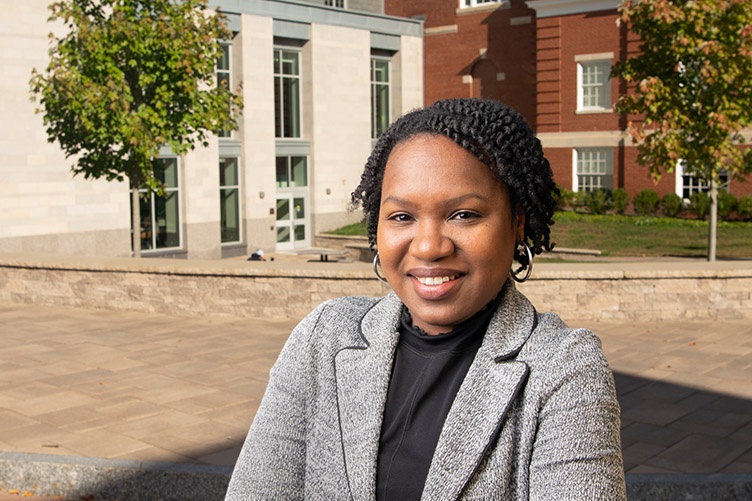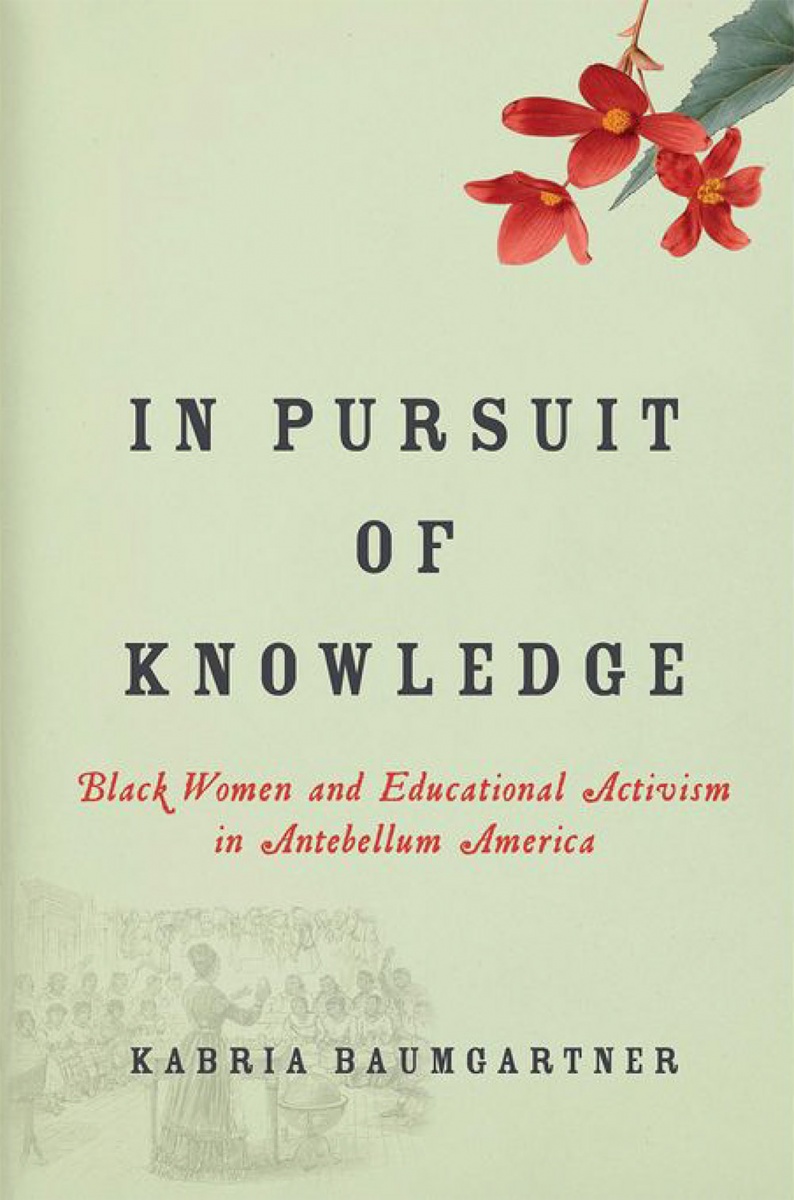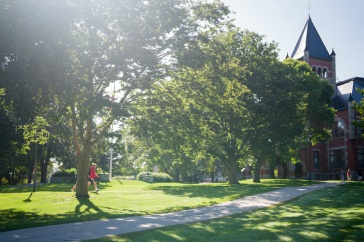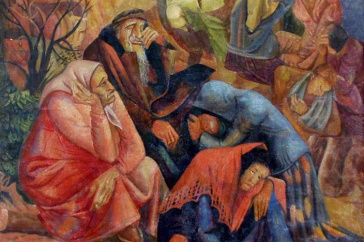
Kabria Baumgartner, assistant professor of American studies.
It’s been a busy year for Kabria Baumgartner, assistant professor of American studies who specializes in nineteenth century African American literature and history. She finished her first book, “In Pursuit of Knowledge: Black Women and Educational Activism in Antebellum America” (New York University Press, 2019), began a second book about the impact of indentured servitude on African American girls and women during the early national period, and is in year two of a $100,000 grant from the National Park Service (NPS) and the Organization of American Historians to support a public humanities project called “African Americans in Essex County, Massachusetts.”
The College Letter caught up with Baumgartner to talk about her passion for using history and literature to inform one another and her foray into public humanities.
You talk about yourself as an historian but sit in an English department.
I grew up listening to my grandfather tell these amazing stories about Brer Rabbit. He was so good at telling them! When I began my professional training in an African American studies department, I could see how folk narratives like the ones my grandfather told me were an important part of African American history, literature and culture. I love digging into a narrative, but to my mind, there’s no better way to appreciate somebody, for example, as profound as Harriet Jacobs than by immersing yourself in the (historical) context in which she wrote her narrative, “Incidents in the Life of a Slave Girl.” So, both literature and history are complementary, especially when studying the African American experience.
What interests you about the nineteenth century?
My first inclination was to study modern African American culture because it was familiar to me; but in graduate school I took a course in nineteenth-century African American history and I learned about the Prudence Crandall case. Crandall was a teacher who opened up a school in Connecticut in the 1830s and tried to admit African American girls. It didn’t end well. She was jailed and the school closed due to violent local reactions. As I dug into the story, I began to see more and more examples of the great lengths African American girls and women would go to pursue knowledge. That became the narrative in my dissertation and why I study New England, which is the cradle of American public education.

So, “In Pursuit of Knowledge” sees the struggle for freedom through education?
Yes, it examines the history of school desegregation in the nineteenth century Northeast as experienced by African American girls and women. The public schools in the early republic weren’t democratic. Blacks were often separated from whites and women from men, so where did that leave black women? White girls “of means” could attend seminaries like Mount Holyoke, but black girls were excluded.
My research uncovered petitions from African American parents to towns, cities and even states explaining why their children should be able to go to local public schools. Parents were integral in pressuring Salem, Mass., to integrate its public schools in 1844. Soon, parents in Boston spearheaded the desegregation of public schools there, which happened in 1855. Once invisible to history, these nineteenth-century African Americans helped democratize American education.
Did the great reformer Horace Mann factor in these efforts?
My book doesn’t say a lot about Mann, but I find it interesting that during this period, he went from being fairly opaque on racial school integration in the 1820s to far more supportive by the 1840s, which is the period I’m studying. His shift is evidenced by the fact that he opened his home to Chloe Lee, an African American student at the state normal school in Framingham who had been denied housing in the area on account of her race.
What does the NPS grant involve?
While I was putting the finishes touches on my book, the National Park Service reached out to Liz DuClos-Orsello at Salem State University and me to help NPS staff develop historically-sound interpretive and programmatic initiatives at Salem Maritime National Historic Park and Saugus Iron Works National Historic Site. This two-year project will provide a thorough accounting of the collections, resources and organizations that, in one way or another, concern the African American experience in Essex County, Mass.
"...I’m interested in the lives and communities that African Americans, both enslaved and free, made for themselves."
The Essex National Heritage Area offers a rich history of the African American experience, reaching back 400 years! While some of this history has been recorded, much of the material and textual evidence is hidden and scattered. We’re digging through collections at more than a dozen repositories and finding accounts of African American work and labor struggles, education, religion and even incarceration.
What kinds of material are you finding?
First, slavery is not our sole focus. There’s a lot of good research out there on northern slavery, so we don’t want to reinvent the wheel! We want to tell other kinds of stories. I don’t want to ignore slavery, but I’m interested in the lives and communities that African Americans, both enslaved and free, made for themselves.
For example, one of my undergraduate students, Maddie O’Leary, did excellent research on Allen Hinton, a formerly enslaved man who moved from the South to Andover, Mass., and opened up a successful ice cream business in the early 20th century. It is a remarkable story of black entrepreneurship and black foodways.
I recently read an article about the resurgence of Black Picnics.
Most people have heard of the Underground Railroad, and we are still discovering first-person narratives about that; but fewer know about Negro Election Day, which began in the early 1700s in New England as a celebration within black communities. Celebrations, in places like Portsmouth, N.H., and Salem, Mass., would include parades, traditional dancing and feasts, culminating in the election of a black representative of that community. It allowed those who couldn’t vote in official elections an opportunity to assert a measure of internal authority and bond with other blacks in nearby communities. By the twentieth century, the celebration was renamed as Black Picnic, a time to celebrate freedom and organize for civil rights. Records show that some people would travel from the South all the way to New England just to be able to celebrate Black Picnic.
Do you have any plans for this material beyond the NPS?
We’ll create an annotated resource guide in conjunction with K-12 education materials based on the historical records that we find.
Who were your role models growing up?
Besides my grandfather, my mother. She taught literacy to non-traditional students at a community college in California. She was an educator.
Just like you.
Just like me.
-
Written By:
Dave Moore | Freelance Writer



















































